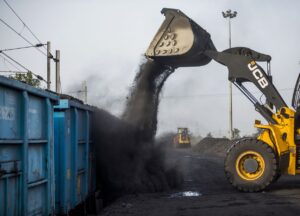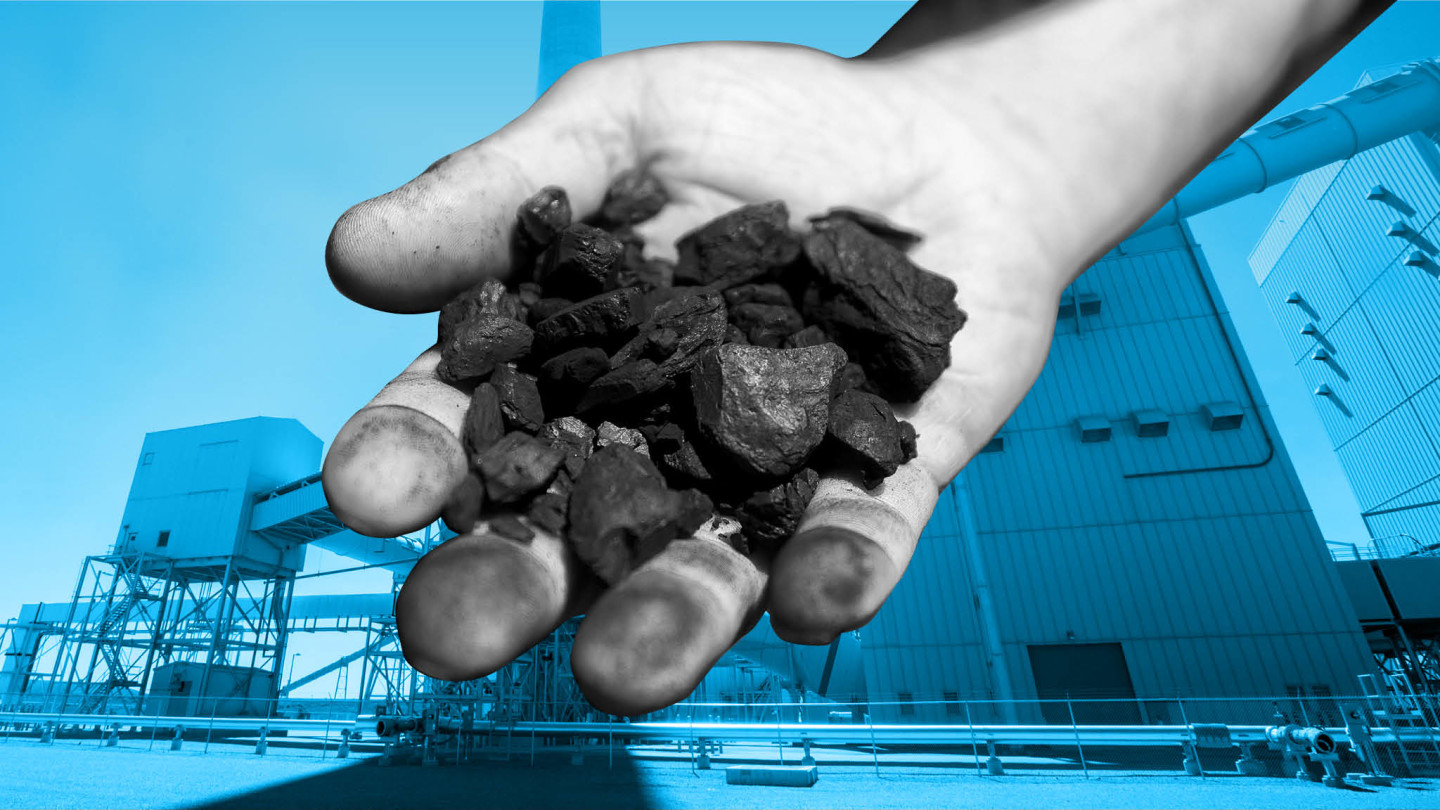India’s coal import fell 43.2 percent to 11.13 million tonnes in July 2020 as compared to the 19.61 million tonnes imported in the year 2019. The cause being the accumulation of black rock piled mountains over the years is regarded as sufficient for fulfilling the demand in a few years to come.
 Import demand for coal continued to reduce amidst the Covid-19 lockdown fuelled by India’s new mission to be self-reliant especially in business, trade and manufacturing industries and production sectors. The market participants investing in this black rock have embraced a wait and watch approach in this time of market uncertainty and are currently looking for a directional stability. Indian coal industry is not supposing to see any dynamics in these dimensions in any coming months or even years.
Import demand for coal continued to reduce amidst the Covid-19 lockdown fuelled by India’s new mission to be self-reliant especially in business, trade and manufacturing industries and production sectors. The market participants investing in this black rock have embraced a wait and watch approach in this time of market uncertainty and are currently looking for a directional stability. Indian coal industry is not supposing to see any dynamics in these dimensions in any coming months or even years.
These results are surprisingly not entirely the liability of Corona Virus Outbreak. Indian Government has been putting up a fight against coal imports for the past few years and now we can see their efforts which have been amplified by the Covid-19 lockdown.
Let’s explore the brief antiquity of this precious rock.
YEAR 2016: Modi Government presents Zero Coal Import Bill.
The Government of India under the leadership of Hon’ Prime Minister Narendra Modi has been working on the  country’s first coal import bill of over 1 lakh crore annual investment. Then Power minister CA Piyush Goyal (Railway Minister in the year 2020) has insisted the government would stop coal imports and make way for domestic coal going ahead.
country’s first coal import bill of over 1 lakh crore annual investment. Then Power minister CA Piyush Goyal (Railway Minister in the year 2020) has insisted the government would stop coal imports and make way for domestic coal going ahead.
Steps have been taken to ramp up the production of coking coal in the country and curtail the use of imported coal. In the year 2015 there had been a drop of Rs 23,000 crore in the import industry. Government is trying to map out the industries-power and non-power use- which will not be seized and will continue to import coal in future. This bill widely covers avoidable coal imports.
Government criticized: ‘India will never have zero coal import bill’, says Experts.
India doesn’t possess reserves for noble quality coking coal and hence most is imported from countries like Australia, Indonesia, Russia and Africa.

Experts are implying that it is this requirement of coking coal added with power plants whose boilers are designed to run only on imported coal, which is likely to continue importing coal in the coming years.
The plan to replace imports with domestic output may falter on a crucial affliction – lack of coking coal reserves that is used as a raw material in steel making and allied industries. The country imported around 200 million tonne of coal last financial year to top up domestic production of 640 Million Tonnes.
YEAR 2017: Government plans to cut coal imports of power public sectors (PSUs) to zero by next year.
The government is aiming to achieve ‘zero’ thermal coal imports of power public sector (PSUs) in the current fiscal, a move that would reduce the country’s import cost by around Rs. 17,000 crores.
The government would also gradually convince the private companies operating in the power space to totally stop the import of thermal fossil fuel.
YEAR 2018: Setback in Government’s fight against coal imports, as the importations rise sharply after two years of decline.
India’s coal imports rise at reckless pace in four years in spite of policies by Prime Minister Narendra Modi’s  government to cut imports and to reduce the trade shortage.
government to cut imports and to reduce the trade shortage.
Coal is one of the top five produces imported by India and we are one of the world’s largest consumers of coal. The rise in imports after two consecutive years of decline adds to the trade deficit.
This trade gap will decrease evaluation of the Indian Currency – rupee and hence regarded as the worst acting out Asian currency- 2018.
Questions raised on Government; Why India became reliant on Foreign coal, what happened to Indian coal mining?
Let us subdivide the import requirement of the country into three parts to understand why the imports were unstoppable:
One is of coking coal, where we have traditionally had a deficit. So, we have been importers of coking coal for a long-long time.
 Secondly, we have power plants at the coasts which are based on imported coal. Their boilers are designed only for imported coal. They will continue to use imported coal. So, it is only the third category of thermal power plants which were using imported coal as a substitute for domestic coal because if its scarcity, which we can do something about.
Secondly, we have power plants at the coasts which are based on imported coal. Their boilers are designed only for imported coal. They will continue to use imported coal. So, it is only the third category of thermal power plants which were using imported coal as a substitute for domestic coal because if its scarcity, which we can do something about.
YEAR 2019: India plans to double its coal production to One Billion Tonnes by next fiscal years.
The government is within the process of formulating strategies to almost double Coal India’s output to at least one billion tonnes over subsequent five years.
Power and Coal Minister Piyush Goyal (Railway Minister in 2020) had earlier said the target of doubling domestic production from the current 490 million tonnes level was a possibility. He said the country should make efforts to become an exporter of coal by drawing up a transparent roadmap to realize this.
Coal Import numbers remain the same despite our efforts for Renewable Energy in Domestic production.
Tackling global climate change is impossible without reducing our dependence on fossil fuels, especially coal. However coal is reasonable and developing economies like India prefer low-cost fuel sources.
Coal is that the largest source of electricity within the world. Coal-fired plants generate 72% of India’s electricity. This, combined with the expansion of coal-consuming industrial sectors like steel, is why the solid fuel source will still be integral to India’s economy within the next few decades.
Plans v/s Reality: India imports excess coal than it needs.
India’s coal imports increased by 13.4% to 20.72 million tonnes in April 2019 compared to 18.27 million tonnes in April 2018. Of the total imports, non-coking coal or thermal coal shipments were over 70%.
India has one among the most important reserves of coal but annual production from monopoly miner Coal India has not been enough to feed the guzzling needs of an industry that consists of power plants, steel mills, cement and fertiliser units.
 The blame is on the factors that limit coal production is land acquisition for coal mining which is under state governments and various clearances of forest along with evacuation of coal from one place to another i.e. shortage of railway rakes to transport coal.
The blame is on the factors that limit coal production is land acquisition for coal mining which is under state governments and various clearances of forest along with evacuation of coal from one place to another i.e. shortage of railway rakes to transport coal.
9th August 2020: India’s Coal imports decline by 43%, reports astonish Nation.
India’s coal import fell 43.2% to 11.13 million tonne in July this year on account of high stockpile of the dry fuel at pitheads, plants and ports.
During April-July 2020, non-coking coal imports stood at 38.84 MT as compared to 60.97 MT imported in the corresponding period last year.
Parliament passes new law which opens up coal sector for commercial mining.
Parliament in August 2020 approved a bill which will remove end-use limitations for partaking in coal pit auctions and open up the coal sector fully for profitable mining by domestic as well as international companies.
The Mineral Laws (Amendment) Bill, 2020, will open a replacement era in Indian coal and mining sector  specially to market simple doing business. The Bill will transform the mining sector within the country, boosting coal production and reducing dependence on imports
specially to market simple doing business. The Bill will transform the mining sector within the country, boosting coal production and reducing dependence on imports
What Pours in Coal Imports to India?
With the Indian economy poised to grow at a quick rate – India’s energy sector will need to brace itself for the rising demand, and as Coal accounts for the majority of primary energy supply, the country’s dependency on Coal is predicted to spiral.
The Government had envisaged that it’ll not need to import coal, except to feed power plants located along the coast. However, there are many issues with reference to domestic coal production, its quality, transportation, efficiency, etc. and thereby in India emanates the need for importing Coal to fulfil the country’s coal consumption requirement.
Why is Coal Sector in India so distressed?

India has to import near 213 million tonnes coal and some Indian companies have also acquired coal mines overseas to ensure continuous supply. The import dependency permanentlyquality coal is neither good for India’s energy requirement nor for its fiscal health.
Following reasons can be listed for Coal sector appalling condition:
- Delayed environment and forest clearances: Environment ministry in past has classified ecological sensitive areas in ‘Go and No Go areas’ and there was total prohibition on mining in no go areas.
- Further there are other clearances required from State and Central Governments.
- Land Acquisition problems.
- Lack of adequate technology.
- Allocation process was arbitrary, discretionary and non-transparent.
- There was no consideration of Merit, no Price discovery mechanism for national resources.
- Till now, the PSU, Coal India was the only commercial miner in the country for more than four decades which has shown monopolistic tendencies in the sector.
- Low productivity of Coal India is still a concern.
- Coal plants have higher operation and maintenance costs because of strict regulatory issues.
- India’s power regulators are not regularly updating prices to accommodate increases in operational costs due to regulation.
- State Pollution Control Boards are ineffective at monitoring or enforcing compliance.
- Expansion in power generation in India has been largely based on state financing.
What measures can be taken to help Indian Coal Industry? (Suggestions)
- There is a need for increasing production and competition by leveraging higher producing mines to enable
 more world-scale operations.
more world-scale operations. - Government should revisit coal grades pricing mechanism from grades based on coal mined to grades based on coal desired for end use.
- With a competitive coal mining sector in the country, the ability to raise competitive finance should also improve.
- Coal mining needs to be facilitated with offtake routes for bulk transportation over long distances as with railways projects delayed for long periods of time it is imperative to look at alternatives
- Risk is the biggest challenge in the sector and risk management needs new instruments, contracting, and incentives.
- Creative and targeted financing should be brought in to address the power sector’s burgeoning problems.
- As India’s coal is high in ash content, coal beneficiation should be done to reduce the ash content and improve its grade.
- The arrival of private players in the coal mining practices can bring a lot of better things into the picture.
- In the long term, India needs to look at coal to gas i.e. more cleaner energy sources.
- Clean coal as an idea has huge potential in India because of the age and inefficiency of some of our plants.
With government’s efforts to push renewable energy thanks to international conventions on global climate change, increase in carbon cess and other initiatives for lesser use of coal, there’s a requirement for ‘Vision 2030 for the coal sector’, which takes under consideration the environmental factors like reduction of carbon footprint, abatement of worldwide warming.

